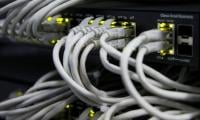Pre-election: the PTI had the best manifesto; 61 pages, 639 sentences and 14,640 words. ‘The Road to Naya Pakistan’ was thorough, focused and wide-ranging. The PTI had rightly identified the weaknesses – the crisis in governance, the rising national debt, electricity theft and heavy losses at state-owned enterprises. The PTI had rightly identified the solution: reforms (the term ‘reforms’ appears some four dozen times). Reform the civil service. Reform the FBR. Reform the police. Reform NAB. Reform government procurement. Structural reforms.
2018: The only visible ‘economic policy’ was to bring back $200 billion worth of ‘looted wealth’ stashed in Swiss banks. How will the IMF be paid back $100 billion? How will Pakistanis become rich? The PTI failed to make a distinction between ‘economic policy’ and ‘accountability’. Then came the three dozen ‘task forces’: a ‘task force’ on energy, police, civil reforms, austerity, asset recovery, knowledge economy, tree plantation and economic corridor. In October came the Ehsaas-Saylani Langar Scheme followed by the Naya Pakistan Housing Programme with the goal of constructing five million houses. In November there were aid packages from ‘brotherly countries’. In December, the PM announced that rural women will be given “chickens and eggs”. This, apparently, would be the business model to revive the country’s struggling economy.
2019: HRH Saudi Arabia’s crown prince “pledged $20 billion worth of investments in Pakistan.” In March, the PM informed us all that Pakistan was on the “verge of hitting a kind of jackpot in the form of discovering a huge reserve of oil and gas in the Arabian Sea.” In May, our deteriorating financial situation forced us to accept a $6 billion IMF bailout package. And then in October-November Maulana Fazlur Rehman descended on Islamabad.
2020: In February, the PM informed the nation that Pakistan’s entire foreign debt would be paid through Reko Diq gold (Fact: In July 2019, a World Bank arbitration court ordered the Pakistani government to pay damages of $5.8 billion.) In April, the Sugar-Wheat Report was made public. We were told the quantum of the scandal was Rs50 billion a year. Then the IPP Report came out and we were told the quantum of the scandal was Rs5,800 billion. Wow! Then came the PM’s tax amnesty scheme for the construction sector. Superb. The best thing the PTI gave us. Resultantly, bank financing for construction jumped 75 percent to Rs259 billion. By June, the Ehsaas programme had disbursed Rs206 billion, providing relief to some 15 million families. Fantastic and unprecedented. Ehsaas ranked among the world's top four social protection initiatives. In September, the PM launched Roshan Digital Accounts. The scheme has since attracted close to $2 billion. Well done.
2021: Pakistan’s IT exports jumped by 47 percent to $1.9 billion in 11 months. Bravo! In July, Pakistan bought LNG cargoes at around $15 per million BTU, the most expensive LNG ever bought by Pakistan since imports began in 2015.
On the optics front, the PTI has its guns pointed in the right direction: a billion-rupee Ehsaas Programme, a trillion-rupee Kamyab Pakistan Programme in the pipeline, health cards and GDP growth at 3.9 percent. All that the PPP can expect is three dozen NA seats from Sindh and the PML-N seems internally divided like never before. Inflation is the PTI’s biggest challenge. Then there are uncertainties – Afghanistan, the IMF and the falling rupee. The PTI is its own biggest challenge, not the PPP or the PML-N.
The writer is a columnist based in Islamabad.
Email: farrukh15@hotmail.com Twitter: @saleemfarrukh
Data, today, defines how we make decisions with tools allowing us to analyse experience more precisely
But if history has shown us anything, it is that rivals can eventually unite when stakes are high enough
Imagine a classroom where students are encouraged to question, and think deeply
Pakistan’s wheat farmers face unusually large pitfalls highlighting root cause of downward slide in agriculture
In agriculture, Pakistan moved up from 48th rank in year 2000 to an impressive ranking of 15th by year 2023
Born in Allahabad in 1943, Saeeda Gazdar migrated to Pakistan after Partition







